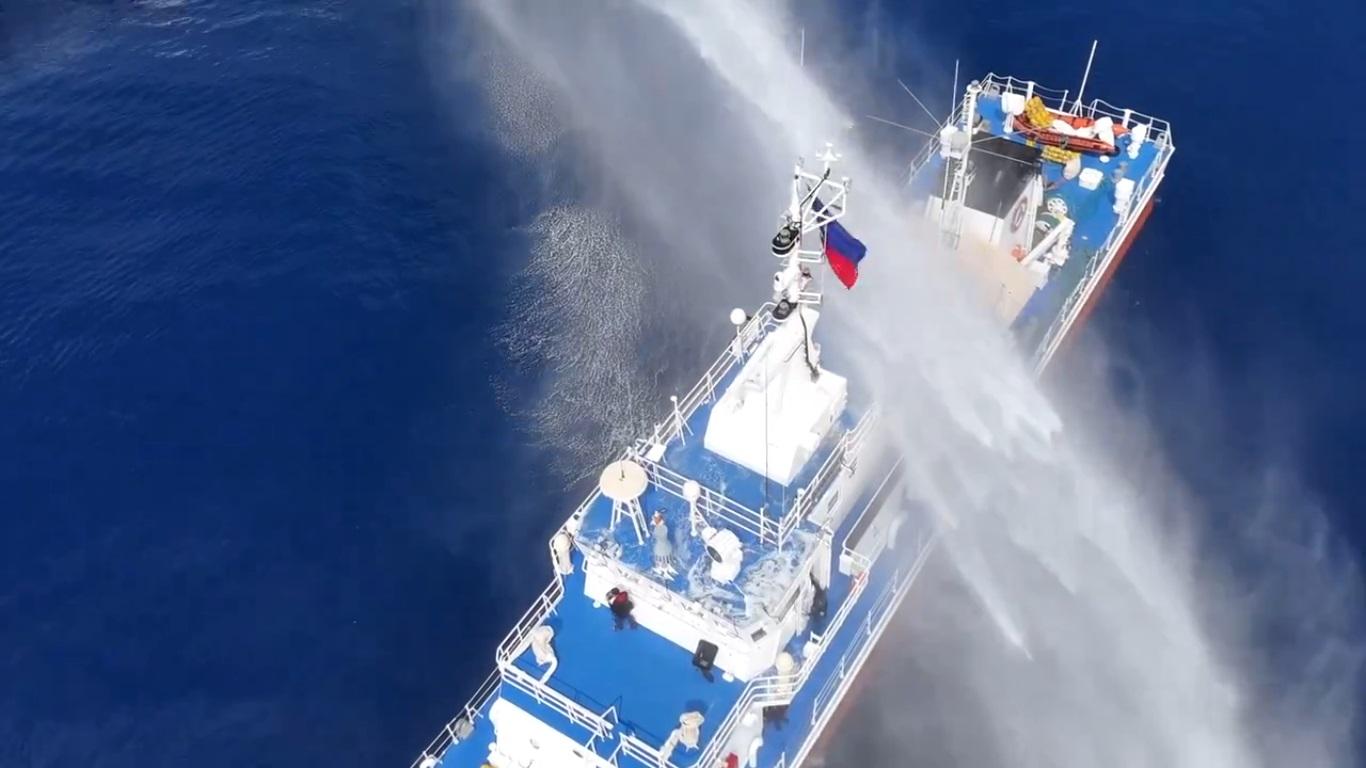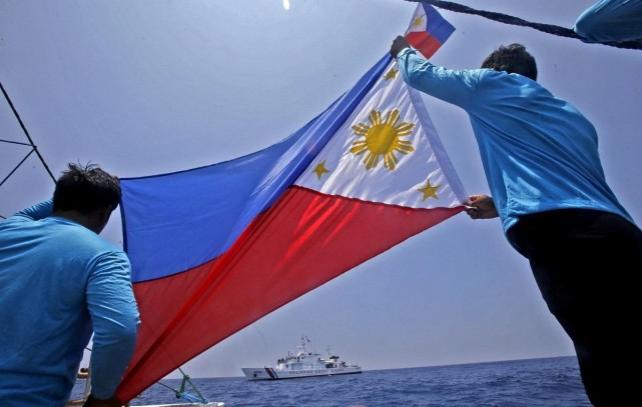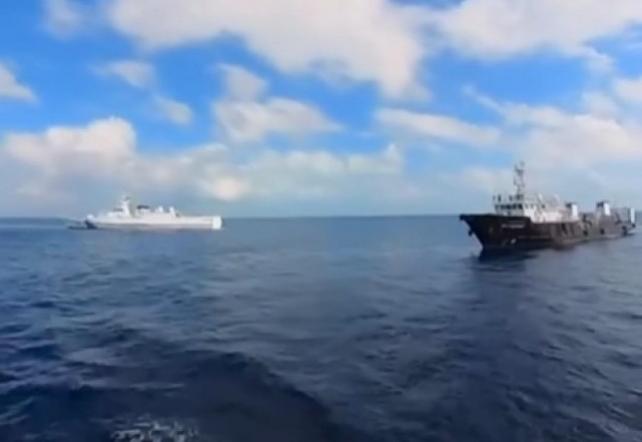Defending Our Territory: The West Philippine Sea

The Philippines and China continue to be embroiled in a territorial dispute amid Beijing's massive claim in the South China Sea (SCS) which includes parts Manila refers to as the West Philippine Sea (WPS).
The South China Sea is a conduit for more than $3 trillion in annual ship commerce. Beijing has overlapping claims in several areas, not only with the Philippines but with Vietnam, Malaysia, and Brunei as well.
In 2016, an international arbitration tribunal in Hague ruled in favor of the Philippines over China's claims in the South China Sea, saying that it had "no legal basis."
The ruling, however, has failed to deter the global powerhouse's aggression and harassment of Filipino fishermen.
In this special report, GMA News Online takes a closer look at the recent incidents in the West Philippine Sea as both the Philippines and China continue to vow to "defend their territory."

January 3, 2024
Two Chinese warships shadowed a joint maritime patrol of the Philippine Navy and the United States Navy in the WPS.
BRP Ramon Alcaraz issued radio challenges to the Chinese ships five times but received no response.
Chinese warships guided missile destroyer Hefei 174 and the frigate Huangshan 570 followed BRP Ramon Alcaraz and her sister ship BRP Gregorio del Pilar as well as BRP Davao del Sur.
The shadowing vessels, however, did not impede the ships as they rendezvoused with the US 7th Fleet for the joint maritime patrol.
January 12, 2024
The Chinese Coast Guard (CCG) ordered Zambales fishermen to return their collected shells near the south entrance of the Bajo de Masinloc.
While the fishermen were collecting seashells, the CCG deployed a rubber boat carrying five CCG personnel who drove away the fishermen and told them to return the seashells.
The Chinese personnel chased the fishermen and held onto their boat to prevent them from leaving.
January 18, 2024
China and the Philippines sought to deescalate tensions in the South China Sea to prevent any miscalculations in the disputed waters during a bilateral consultation meeting in Shanghai.
However, tensions continued throughout the first half of the year as China accused the Philippines of trespassing its “nine-dash line” territory, while the Philippines called out China’s attacks and aggressive actions against Filipino personnel and fishermen in its exclusive economic zone (EEZ).

February 22, 2024
A CCG vessel and a Chinese fishing vessel blocked the path of the Philippines’ Bureau of Fisheries and Aquatic Resources (BFAR) ship BRP Datu Sanday two nautical miles from Bajo de Masinloc.
The BRP Datu Sanday issued a radio challenge against the CCG for its action.
March 5, 2024
The Philippine Coast Guard (PCG) said BRP Sindangan collided with a CCG vessel during a resupply mission to the grounded ship BRP Sierra Madre in Ayungin Shoal.
According to the PCG, CCG vessels performed dangerous maneuvers and blocked the Philippine ships that resulted in the collision.
Four Filipino personnel sustained injuries while the PCG vessel sustained minor structural damage.
March 21, 2024
According to a report on March 26, several Filipino marine scientists were injured after they were reportedly harassed by a Chinese Navy helicopter at Sandy Cay, which is 2.5 nautical miles from Philippine-occupied Pagasa Island.
According to the PCG, the researchers from the University of the Philippines (UP) Institute of Biology and the BFAR traveled to Sandy Cay to record its biodiversity and help ensure food security.
The downwash from the helicopter scattered dead corals, causing cuts and scratches on the Filipino researchers.
March 23, 2024
A Philippine vessel carrying supplies for Filipino troops stationed at the BRP Sierra Madre suffered heavy damage after receiving water cannon blasts from CCG ships in its approach to Ayungin Shoal.
The Unaizah May 4 (UM4) sustained heavy damage due to the continued blasting of water cannons from two CCG vessels.
Aside from this, the CCG also performed a reverse blocking maneuver against UM4, causing a near collision.
Three Philippine troops were injured.
March 27, 2024
PCG vessel BRP Sindangan accidentally hit a CCG ship that blocked its path to Ayungin Shoal.
CCG boat 4103 chased the Philippine vessel and blocked it from catching up with the resupply boat UM4. The PCG vessel accidentally hit the Chinese ship because of the latter's speed.
The Chinese vessel incurred a hole.
BRP Sindanagan and BRP Cabra were also surrounded by CCG and Chinese maritime militia boats.
April 4, 2024
The PCG and BFAR were harassed by the Chinese Coast Guard while conducting food security operations at the Rozul Reef.
Their personnel were dropping floating aggregate devices (payao) when CCG vessels 21551 and 21556 arrived and started harassing Filipino fishing boats.
The CCG vessels “went as far” as pretending to man their water cannons and threatened the Filipino fishermen, according to the PCG.
April 14, 2024
A CCG vessel blocked and tailed the National Mapping and Resource Information Authority (NAMRIA) vessel BRP Hydrographer Ventura and the PCG's BRP Gabriela Silang as the Philippine vessels were sailing to Bajo de Masinloc.
The Philippine vessels were about to conduct a hydrographic survey in the area but the CCG vessel blocked them 35 nautical miles from Luzon's coast.
The vessels were halted for about eight hours, but they eventually set sail for the Bajo de Masinloc with the CCG vessel shadowing them.
April 30, 2024
CCG vessels again fired water cannons at Philippine civilian vessels en route to Bajo de Masinloc.
PCG vessel BRP Bagacay sustained damage in its canopy and steel railing due to the water cannon attack by two CCG vessels.
BFAR vessel BRP Bankaw was also water cannoned by Chinese vessels during the mission.
May 19, 2024
The Armed Forces of the Philippines (AFP) released a video showing Chinese agents "snatching" the supplies it airdropped for Filipino troops stationed on BRP Sierra Madre in Ayungin Shoal.
The AFP also said that the Chinese agents used "dangerous" maneuvers after steering "very close" to Filipino soldiers.
The Chinese agents are possibly from the China Coast Guard or People’s Liberation Army, according to the AFP.
On that day, another incident happened. CCG vessels and boats had blocked and rammed Philippine boats performing medical evacuation near Ayungin Shoal.
The CCG intentionally rammed as Filipino personnel transferred the sick individual from the Philippine Navy’s rigid hull inflatable boat.
According to the PCG, the rendezvous point is at 15.43 nautical miles southeast off northeast entrance of Ayungin Shoal.
The sick individual was a member of the Armed Forces of the Philippines (AFP) who was deployed at BRP Sierra Madre.
June 3-4, 2024
The People's Liberation Army Navy (PLAN) of China conducted exercises during the marine scientific survey of Filipino scientists in Escoda (Sabina) Shoal in the WPS, the PCG said.
PLA Navy 987 contacted MRRV 9701 informed the PCG that they are going to have an amphibious drill or operation. But before the call, they had already launched their hovercraft in the area.
In the same period, a tense faceoff between the coast guards of the Philippines and China broke out in the area after Chinese forces attempted to block the Philippine marine scientific research mission.
AFP chief General Romeo Brawner Jr. earlier said that China engages in "gray zone tactics.”
Gray zone is “an effort or series of efforts beyond steady-state deterrence and assurance that attempts to achieve one’s security objectives without resorting to direct and sizable use of force,” as defined by the National Defense College of the Philippines.
“In engaging in a gray zone strategy, an actor seeks to avoid crossing a threshold that results in war," it added.
Not engaging in any war
President Ferdinand “Bongbong” Marcos Jr. said the Philippines "will not wage any war" despite the external threats facing the country.
However, he said that the Philippines should be prepared as more external threats arose due to heightened geopolitical tension in the Indo-Pacific.
''If there's an incident that ended up killing a Filipino serviceman, be they a Coast Guard or in the military, part of the Navy, that would certainly increase the level of response,'' Marcos said.
In his Independence Day speech on Wednesday, Marcos underscored that it is the duty of every Filipino to protect the independence and not to succumb to threats and challenges faced by the country.
"At bilang tagapagmana ng kalayaan na tinatamasa natin ngayon, tungkulin ng bawat isa sa atin na pangalagaan ito at tiyakin na hindi na tayo kailanman magpapatinag sa banta ng pananakot, pananakop at pang-aapi," Marcos said.
(As heirs of the freedom we enjoyed today, it is our duty to protect this and ensure that we will not succumb to threats of oppression.)
Later that day, at the Vin D'Honneur reception for the 126th celebration of Philippine Independence Day, Marcos also committed to enhance engagements with regional and multilateral partners while working towards common goals through the promotion of diplomacy and dialogue.
"On the global stage, we have taken positions in support of the rule of law and of the rules-based international order, grounded on the principles laid out in the UN Charter and multilateral conventions," said Marcos. —VAL, GMA Integrated News




